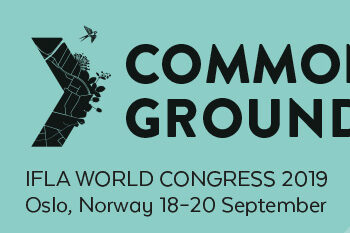
This year’s IFLA World Congress 2019 was held in Oslo, Norway under the theme “Common Ground”. The participants from all over the world devoted themselves collectively to the functions of landscape architecture and reflected on these functions in light of current global developments.
Billboard
Skyscrapper
Halfpage
This year’s IFLA World Congress 2019 was held in Oslo, Norway under the theme “Common Ground”. In keeping with this topical focus, the more than 1,450 participants from all over the world devoted themselves collectively to the functions of landscape architecture and reflected on these functions in light of current global developments.
As had been the case at the World Conference of Landscape Architects, the overarching theme was the global climate crisis and the rapidly advancing loss of global biodiversity, as well as the role that landscape architecture can or must play in these crises. The united effort to make professional contributions to defusing this ecologically precarious situation was just as palpable as the sense of urgency experienced by the field of landscape architecture in light of the global environmental crisis. This is an opportunity for the field to continue to bolster its relevance, however, in order to do so, landscape architects will need to position themselves better in the flow of global change.
No sooner said than done! In order to underline the urgent need for action, the IFLA World Council 2019 – the General Assembly of the International Federation of Landscape Architects – declared a climate and biodiversity emergency to which the 77 voting member organisations committed themselves. The specific actions desired in order to counter these global challenges were developed and formalised in a Climate ACTION! Plan. An unusually bold step for the World Organization – and such a welcome one!
In addition to climate and species protection, landscape architecture must continue to focus on the complexity and versatility of the discipline in any event; it would be wrong to prioritise environmental tasks. How this balancing act can succeed was illustrated through the countless contributions at the Congress from a wide variety of countries, research areas and fields of activity that are now continuing to grow together on a fertile “Common Ground”.
















